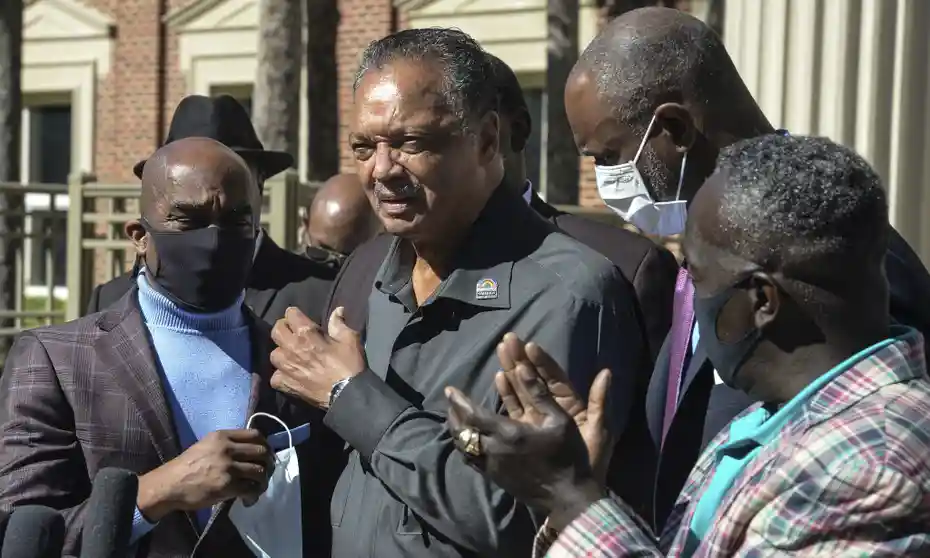Even after the rise and resurgence of the Black Lives Matter movement, the elections of a Black president and Vice President and several years of racial reckoning over state violence against Black men and women, if you want it’s still plain to see how far some parts of the US haven’t come on race. Just look at the trial of Travis McMichael, William “Roddie” Bryan and Travis’s father Gregory McMichael for the murder of Ahmaud Arbery.
The details of the case are themselves stunning. According to his family, Arbery — a runner — was out for a jog. Two White men, claiming concern about local break-ins, grabbed their guns, jumped in a truck, pursued Arbery, later joined by a third White man. One of those men shot and killed Arbery with a shotgun. The McMichaels say they were defending themselves while attempting to make a “citizen’s arrest” — yet Travis McMichael testified during the trial Arbery never threatened any of the men now on trial for his killing.
That a group of White men felt justified in chasing a Black man through their neighborhood — even a man they believe had committed burglary (not a capital offense) — and then felt they deserve to get off scot-free after one of them shoots him dead is egregious enough. But compounding this egregiousness is the racist attack launched on the victim by a member of the defense team. On Monday, defense attorney Laura Hogue went as far as to say during her closing argument in the case, “Turning Ahmaud Arbery into a victim after the choices he made does not reflect the reality of what brought Ahmaud Arbery to Satilla Shores in his khaki shorts with no socks to cover his long, dirty toenails.”
What does the state of Arbery’s pedicure have to do with whether the man who shot him is guilty of murder? Nothing. There is no conceivable justification for Hogue, in her role as her client’s advocate, to cite such details, other than a blatant attempt to paint a racially coded picture in jurors’ minds of Arbery as less than human, as a dirty beast who posed a legitimate threat. A person the members of the jury — nearly all of whom are also White — might not want in their own neighborhoods, either. It was, it seems, a naked ploy to weaponize White fear in order to secure an acquittal for her client.
Arbery’s mother left the courtroom in shock and disgust. She told CNN’s Anderson Cooper she was appalled the defense attempted to “dehumanize” her son.
It was a shameful display, and the kind of character assassination tactic of someone who doesn’t believe they can win on the merits. “Literally after those men in that courtroom assassinated their child, now they’re sitting here assassinating his character,” said family attorney Benjamin Crump.
It was also a familiar ploy in the sad, long history of racist violence in the United States. Over and over again, Black victims are trashed and their names tarnished after their deaths in an effort to justify the violence against them. These portrayals go back to the days of slavery, and particularly to the Reconstruction era, when many Whites felt threatened by newfound Black freedom. Lynchings and killings, including the murder of Emmett Till, a child, were justified by the claim that Black men and boys had raped or otherwise assaulted White women. The image of Black men as brutes and savages is acutely captured in the pro-Ku-Klux-Klan film “Birth of a Nation.”
Decades and over a century later in some cases, these portrayals have shifted, but they haven’t gone away. When White people commit acts of violence against Black people, Black men, women, and even children are routinely slandered as scary, threatening, and animalistic, the message being the white assailant or murderer was acting in self-defense — and the Black victim had it coming.
This same trope remains employed so often that “he was no angel” — the line trotted out, often by conservative and even some mainstream news outlets, after the killings of Black men and boys — is widely understood as a clichéd trope. Even 12-year-old Tamir Rice, who was shot by a cop when he was on the playground, was called a “thug” by a police union president and blamed for his own death.
And now here is Arbery, with the state of his toenails used to try to justify his killing.
The question now is whether the jury will fall for it — or whether, after so much has changed and so much has stayed the same, they’ll see these disgusting tactics for what they are. I hope that as they deliberate, whatever outcome they reach, they will reject this attempted victim-blaming, and pursue justice for Ahmaud Arbery. But the long history that set the scene for Arbery’s murder, and that is playing into the defense strategy of the men who pursued him and the one who pulled the trigger, won’t go away when the jury renders its verdict. That’s up to all of us: To name these racist tropes, to understand their insidiousness, and to reject them.

